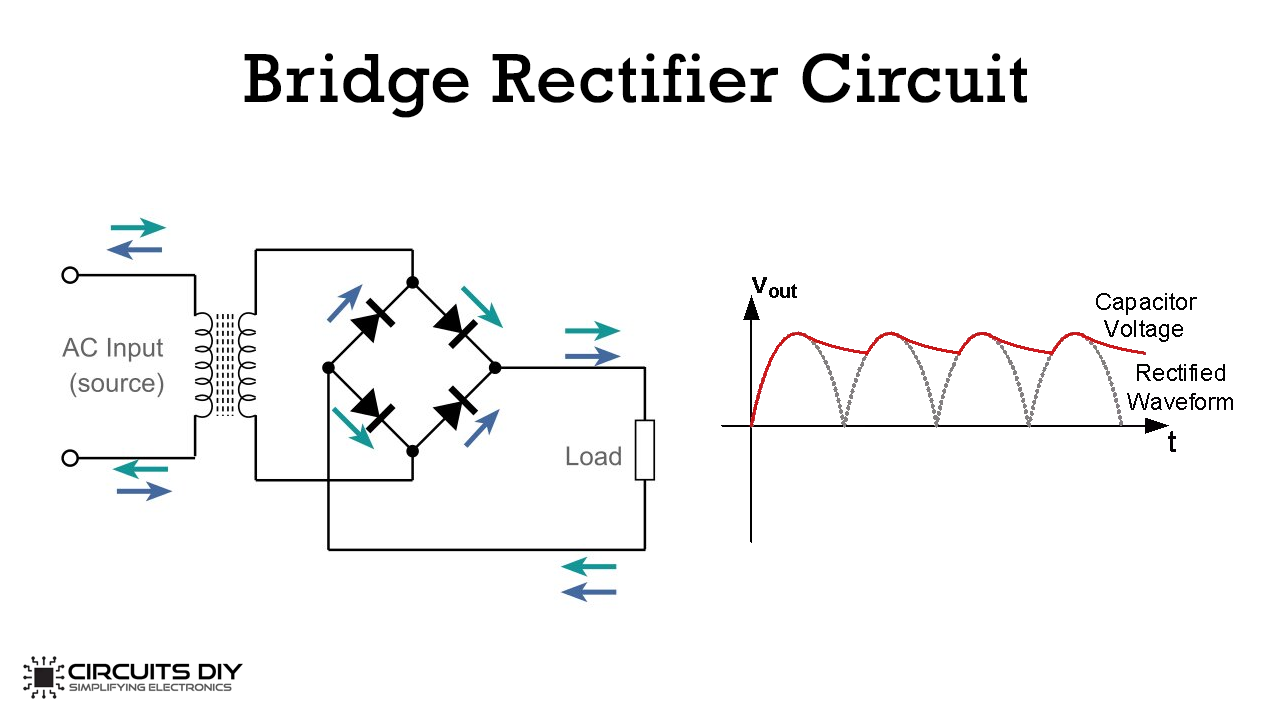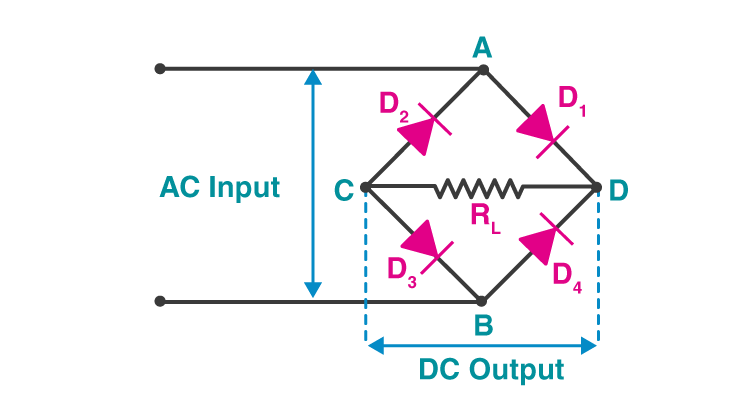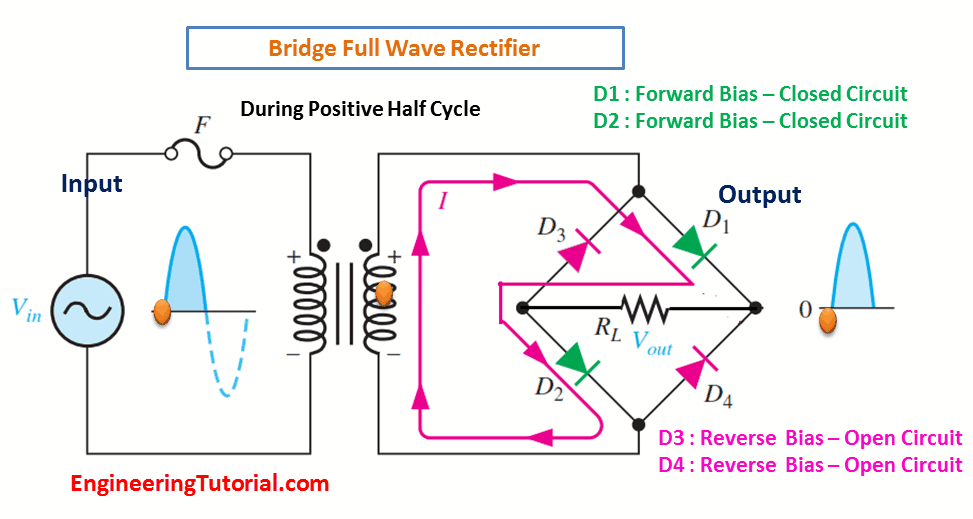Construction And Working Of Bridge Rectifier Presentation
| Introduction to Bridge Rectifier | ||
|---|---|---|
| Bridge rectifier is a type of rectifier circuit used to convert alternating current (AC) to direct current (DC). It is widely used in various applications such as power supplies, battery chargers, and motor control circuits. The bridge rectifier consists of four diodes arranged in a bridge configuration. | ||
| 1 | ||
| Construction of Bridge Rectifier | ||
|---|---|---|
| The four diodes in a bridge rectifier are connected in a diamond-shaped configuration, forming two pairs of diodes. Each diode is connected to two opposite corners of the diamond. The AC input is connected to the remaining two corners of the diamond. | ||
| 2 | ||
| Working Principle of Bridge Rectifier | ||
|---|---|---|
| During the positive half-cycle of the input AC signal, diodes D1 and D3 are forward-biased, allowing current to flow through them. At the same time, diodes D2 and D4 are reverse-biased, blocking the current flow. This arrangement allows only the positive half-cycles of the AC signal to pass through the diodes. | ||
| 3 | ||
| Working Principle of Bridge Rectifier (Continued) | ||
|---|---|---|
| During the negative half-cycle of the input AC signal, diodes D2 and D4 become forward-biased, allowing current to flow through them. Simultaneously, diodes D1 and D3 become reverse-biased, blocking the current flow. This arrangement allows only the negative half-cycles of the AC signal to pass through the diodes. | ||
| 4 | ||
| Output of Bridge Rectifier | ||
|---|---|---|
| The output of the bridge rectifier is a pulsating DC waveform. The diodes allow the positive and negative half-cycles of the AC signal to pass through, resulting in a series of pulses. These pulses are then filtered using a capacitor or an additional filter circuit to obtain a smoother DC output. | ||
| 5 | ||
| Advantages of Bridge Rectifier | ||
|---|---|---|
| The bridge rectifier has a higher efficiency compared to other rectifier configurations. It does not require a center-tapped transformer, simplifying the circuit design. It provides a full-wave rectification, resulting in a higher average output voltage. | ||
| 6 | ||
| Disadvantages of Bridge Rectifier | ||
|---|---|---|
| The bridge rectifier circuit requires four diodes, which can increase the cost and complexity of the circuit. The pulsating DC output requires additional filtering to obtain a stable and smooth DC voltage. The reverse recovery time of the diodes can introduce switching losses and affect the efficiency of the circuit. | ||
| 7 | ||
| Applications of Bridge Rectifier | ||
|---|---|---|
| Bridge rectifiers are commonly used in power supplies, where a stable DC output is required. They are used in battery chargers to convert AC input to DC for charging batteries. Bridge rectifiers are also used in motor control circuits to convert AC power to DC for controlling motor speed and direction. | ||
| 8 | ||
| Conclusion | ||
|---|---|---|
| Bridge rectifiers are essential components in converting AC to DC in various electronic applications. Their simple construction and high efficiency make them suitable for a wide range of power conversion needs. Understanding the working principle and design considerations of bridge rectifiers is crucial for successful circuit design and implementation. | ||
| 9 | ||






